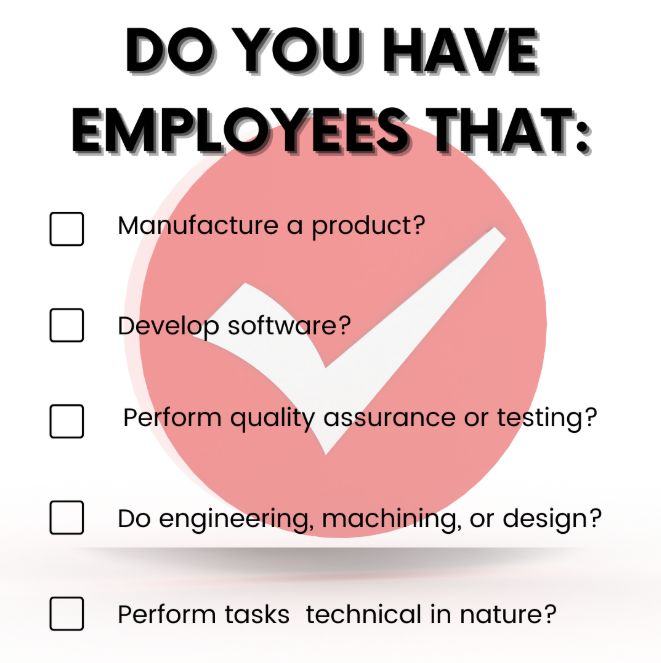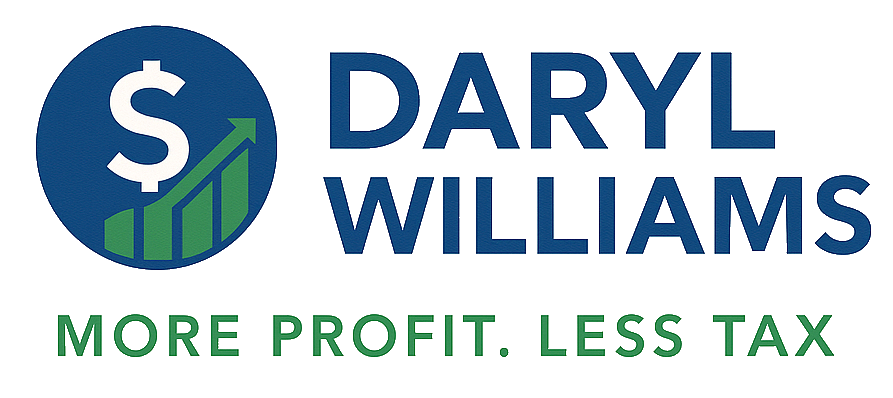The Truth Behind The R&D Tax Credit
Why are so many eligible businesses not claiming this credit?
And, could you be one of them?
Have you checked your eligibility?
Over $14 billion is distributed annually to recipients of The R&D Tax Credit. This is an often misunderstood
CLICK BELOW TO WATCH FIRST!
Over 40 Industries Qualify For The R&D Tax Credit
The R&D Tax Credit offers businesses in over 40 industries the ability to capture these funds. Don't miss out on your opportunity. Here are just a few of the industries that may qualify. If you do not see your industry listed check with our team here.
Doctor / Vet Offices
Small Call to Action Headline
Hotels
Small Call to Action Headline
Auto Dealerships
Small Call to Action Headline
Apartment Complex
Small Call to Action Headline
Assisted Living
Small Call to Action Headline
Retail Properties
Small Call to Action Headline
Restaurants
Small Call to Action Headline
Manufacturing
Small Call to Action Headline
And many more ...
Small Call to Action Headline
What is the Research & Development Tax Credit?
The Research & Development Tax Credit (R&D Tax Credit) is an often misunderstood and highly underutilized federal tax credit. It can significantly impact businesses, but owners don't tend to claim the R&D credit because they either are unaware of it or think it doesn't apply to them.
The R&D Tax credit was enacted in 1981 to stimulate innovation and encourage investment in development in the United States. The PATH Act of 2015 officially made the R&D Tax Credit a permanent addition to the U.S. tax code.
The R&D Tax Credit is a credit on your income tax return, not a deduction. That means, dollar-for-dollar, you can reduce your tax liability and deduct eligible R&D expenses.
The credit can be used for all open tax years, meaning the last three years, plus the current year. Additionally, you can carry forward any unused credit for up to 20 years, making the credit beneficial year after year, aiding in improving cash flow and earning power for years to come.
Does My Business Qualify?
If you're asking yourself this question, you are not
alone. The R&D Tax Credit has evolved over the past forty years and is no longer limited to highly technological industries. It now applies to all companies in all industries.
There is a list of what the IRS calls "Qualified Research Expenditures" or QREs. This list of activities and expenditures is what the IRS bases qualification on. If your business performs any of these activities, or expenditures you could qualify.
The R&D Tax Credit has moved beyond white lab coats and beakers into the everyday companies and it's time you took advantage of it.


Misconceptions About The R&D Tax Credit
Understanding tax credit eligibility can feel overwhelming and confusing. More often than not, day-to-day operations are time-consuming and take precedence over everything else. In addition, industry was hit hard by COVID-19, which is why there has never been a more critical time for business owners to determine which tax credits they are eligible to receive—the potential benefit is too great to pass up.

My Business Won't Qualify
Many business owners assume that since they are not a manufacturing or tech company building a new product or service, they don't qualify. This is a myth! This credit can be claimed by any company that has taken the initiative in the field of research and development and optimized its technique, technology, product, service, equipment, composition, and so on. The list of qualifying expenditures is long. It's not about what industry you are but what you do daily.
AMT Will Keep Me From Claiming R&D
AMT restrictions did prevent qualified companies from utilizing 100% of the R&D Tax Credit before the PATH Act was enacted in 2015. The PATH Act allowed those who have pursued qualified activities and their business earning gross receipts of $50 million or less to qualify for the R&D tax credit against their AMT to lower their tax burden.


